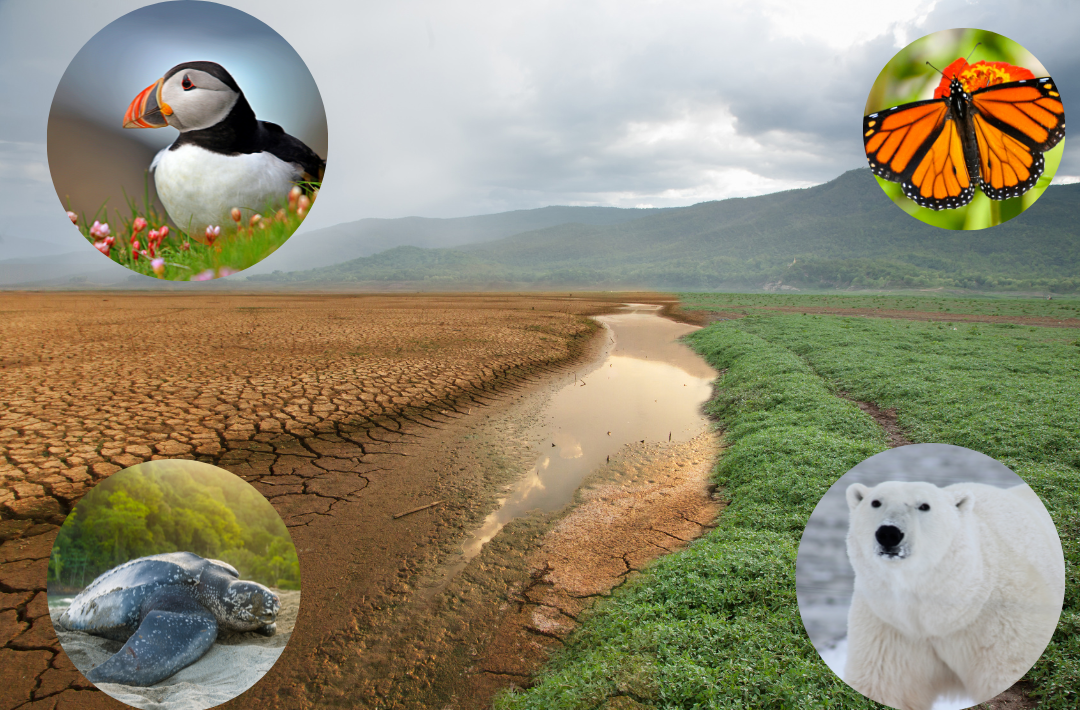Experts consider climate change to be one of the biggest threats to the environment. But understanding the links between a changing climate and things like species extinctions can be difficult. How can changing weather patterns have such big impacts on the natural world that we know and love? After all, what’s wrong with things getting a little warmer? After all, how does climate change actually affect wildlife?
In this The Deep Stuff post, let’s explore the many connections between climate change and wildlife.
Changing climate, changing habitats

One major rule in nature is that the natural places where wildlife life, which we call habitats, are a product of the prevailing climate. In other words, the long-term weather patterns, the typical levels of heat and cold, rain and drought. determine whether an area is good for one species or another. Scientists separate biomes the largest biologically different zones on the planet, by their climates (check out my post on biomes to learn more!). While deserts are hot and dry, boreal forests may be cold and wet.
See where this is going? As climate patterns change, so do the habitats that plants and animals need to survive. For some species, this can mean their very homes are disappearing around them. As their habitats disappear, the lands, rivers, or oceans where wild species live can’t support them. Eventually, there are too few to support their populations, and they can go extinct.
Some worse than others
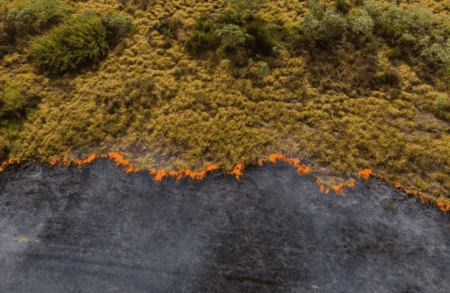
As it turns out, not all habitats are equally threatened by climate change. As certain areas get drier, wetter, warmer, and sometimes (although rarely!) colder, it has different impacts on different habitat types. For example, in many semi-arid Mediterranean climates, areas that were once forest or wetland are becoming desert as the climate gets drier. By contrast, many tundra habitats, which were previously too cold to support trees, are becoming forested. In the arctic, scientists are observing a “northward march” of trees and shrubs into areas where they were formerly rare.
One of the most famous examples of a species rapidly losing its habitat is the polar bear (Ursus maritimus). Polar bears live and hunt primarily from massive sheets of sea ice in the high arctic. As the Northernmost parts of the globe get warmer, that sea ice is melting. It becomes more fragmented and covers less area, forcing polar bears to swim further to make their living. Many risk starving or drowning as they try to find enough food. In some regions, polar bear populations have decreased by nearly half.
It’s the extremes that count
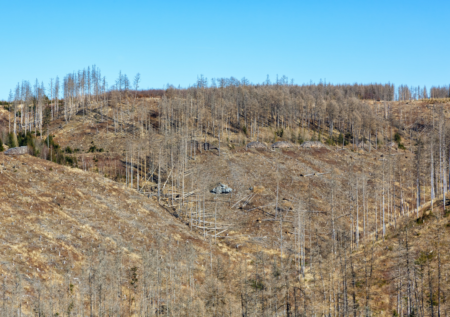
Journalists and media outlets typically show us graphs of the slow, steady increases in average annual temperature throughout the globe. While this is a little alarming considering the entire planet, it’s hard to understand how it can harm wildlife. The key term there is ‘average‘. When we’re looking at averages, we are excluding a lot of the variability or “wiggle” in the information. If temperatures fluctuate all up and down every week, but the lows are as big as the highs, the average will come out looking pretty moderate.
These averages hide a major way for climate change to affect wildlife. While increasing average temperatures aren’t great, it’s the occasional peaks and extremes that really cause problems. A slowly warming planet means that certain areas that occasionally have heatwaves now have excessively high ones. Where local wildlife were adapted to withstanding a certain peak, there is a limit to what they can withstand.
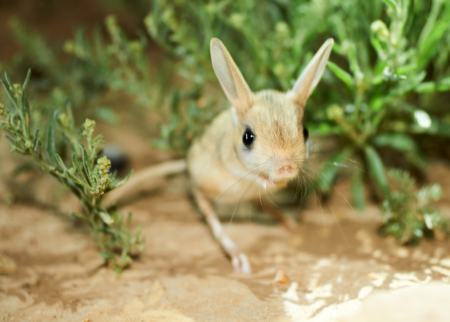
Many forms of wildlife exist near the limit of their tolerance for heat or drought some of the year. While the rest of the year they may be fine, in certain seasons they are teetering on the edge. When heat gets close or beyond their tolerance, they begin experiencing what is called heat stress. Although not problematic for a short period of time, as organisms spend more time near or beyond their tolerance, it can affect their populations and drive them to extinction.
Animals that have a way to protect themselves from extremes, like burrowing or hiding from the sun, tend to do better than ones who can’t. For example, in the Mojave desert, birds are being heavily impacted by rising temperatures, while mammals seem to be better off.
Out of sync, out of luck
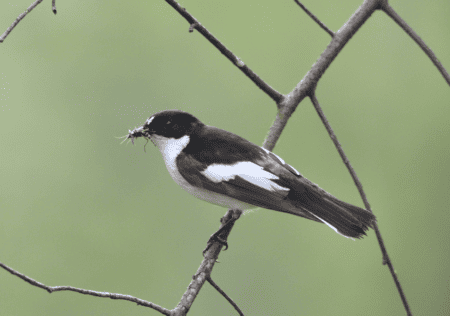
Although good habitat, safe temperatures, and rainfall are important parts of supporting local ecosystems, another factor is timing. Even in tropical areas, natural places show distinct rhythms based on temperatures, rainfall, and other factors. Plants, animals, and all other living things in a place are adapted to the specific timing of those conditions, and base their life history around it. For more about the importance of timing, or what biologists call phenology, in nature, check out my post Timing is Everything.
Another major way that climate changes can affect wildlife is by drastically changing the timing of these events. If things start happening much later or earlier than wildlife are used to, it can be a huge problem.
Deer and Possums
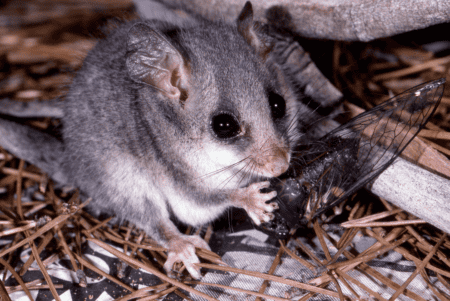
For example, roe deer (Capreolus capreolus) in Europe typically time the birth of their fawns to correspond with the blooming of Spring flowers. This is not only super adorable also essential for the survival of mother and fawn so that there is sufficient food for mom to produce milk. In many parts of Europe, roe deer populations are declining because flowers are coming up before fawns are born.
Similarly, pygmy possums (Burramys parvus; not to be confused with American opossums!) in Australia are coming out of hibernation earlier. As temperatures change, they come out too early for their most important prey. Possums depend on bogong moths (Agrotis infusa) to have sufficient food after hibernation. By “waking up” too early, they missing their key time for feeding as they not aligning with the moth emergence.
When wildlife get out of sync with their environment, the consequences can be huge across time. Even a small drop in the number of babies they can successfully raise in a year, or in how likely they are to survive their annual migration, can make the difference between existence and extinction the course of decades.
Going up! The Escalator to Extinction
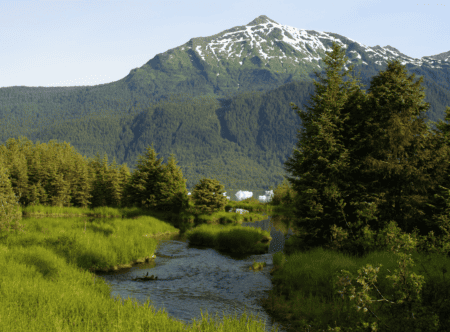
Another major factor that affects wildlife habitat is elevation. In other words, how high up a place is with respect to the ocean. Higher-elevation places tend to be cooler, sometimes wetter, with later Spring onset and earlier arrival of Fall and Winter. Just as with other natural places, the wildlife that live in high elevation places like mountaintops and ridges are specially adapted to those places. Want to learn more about elevation and how you can use it for your own nature adventures? Check out my post on The Elevation Time Machine!
Mountaintops and high elevation areas can seem harsh at first glance. Think about Mt. Everest, for example! However, for many organisms they are key refuges. For them, high elevation habitats are often like little islands, isolated in a sea of habitats that are too warm. Alternatively, for many animals, key food resources or plants that they rely on don’t grow at lower elevations. This makes each mountaintop area an important home for unique and interesting wildlife.
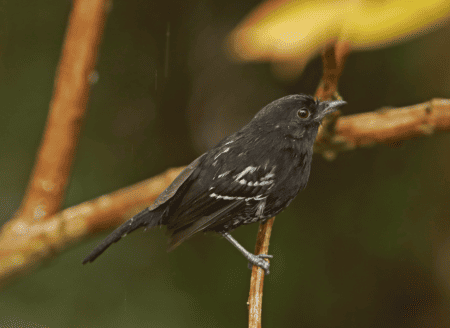
As conditions get warmer around the globe, warmer temperatures creep slowly Northward. For some animals (and even plants, as their seeds disperse), keeping up with this change is just a matter of moving Northward. However, as warmer temperatures also creep their way up mountains, high elevation animals will eventually have nowhere to go. Some biologists call this “the escalator to extinction” as high-elevation species have to move further and further uphill and, because of that, have less and less habitat.
Tropical Birds and Wolverines
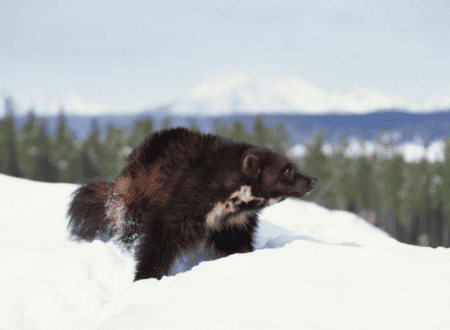
Scientists have been witnessing the escalator to extinction for lots of tropical birds, especially in the Andes of South America. Likewise, many rare and special alpine or mountain-loving pants in Scotland are disappearing as temperatures heat up.
Unfortunately, the namesake of hits blog, the Wolverine (Gulo gulo) also suffers from warming mountains. Wolverines make birthing dens or nests for sheltering their young in deep snow. As mountains get warmer, wolverines need to move further and further upward, or Northward, to find sufficient snow. When it’s harder to raise young, it’s hard to keep a population going. Especially for larger mammals like wolverines that can’t reproduce quickly. Wolverines may lose a third or more of their habitat in the next 25 years because of this issue.
Warmer and more acidic oceans
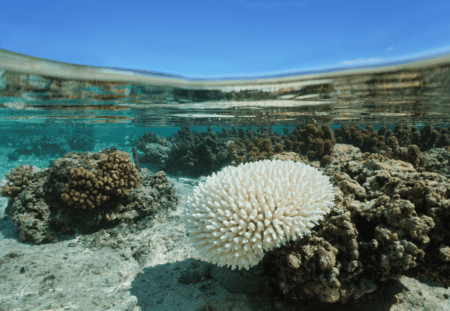
Of course, climate change isn’t only affecting habitats and wildlife on land. It is having huge effects the marine or oceanic environment too. As the average temperature of ocean water increases, ocean life also experiences heat stress. Just like in natural habitats on land, heat stress can make species populations go into decline or even cause extinction.
One of the most famous and heartbreaking examples is in coral reefs. Corals rely on symbiotic algae that live inside them to get enough energy to survive. Unfortunately, sources of stress like heat can disrupt their relationship with this algae. Many coral species under heat stress undergo coral bleaching in which they expel their algal friends from their bodies. This makes the coral turn ghostly white, and almost always leads to the coral’s demise.
Ocean acidification
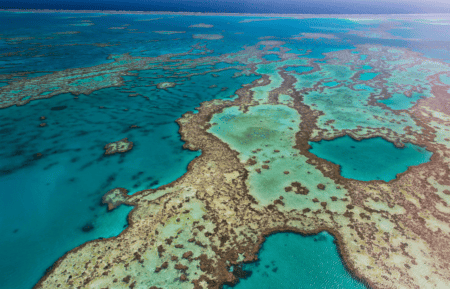
Another unwanted side-effect of climate change is the acidification of the world’s oceans. The pH, or acidity of Earth’s seawater depends on how much carbon there is in the atmosphere. Increasing concentrations of carbon dioxide (CO2) in the atmosphere has tipped the scales toward more acidic seas. This comes from an excess of carbonic acid, which increases the concentration of hydrogen ions seawater. Our oceans may now already be one-third more acidic than they were a couple hundred years ago.
More acidic seawater is a huge problem for wildlife. Unlike insects, most invertebrates in the ocean including mollusks (like clams) and decapods (like lobsters) grow shells from calcium carbonate. Unfortunately, it becomes more difficult to form these shells in more acidic water. The acid reacts with the necessary bicarbonate ions, making them less available. Furthermore, more acidic water can slowly break down the shells that these organisms rely on to survive.
Climate change and Invasive Species: A Losing Combo
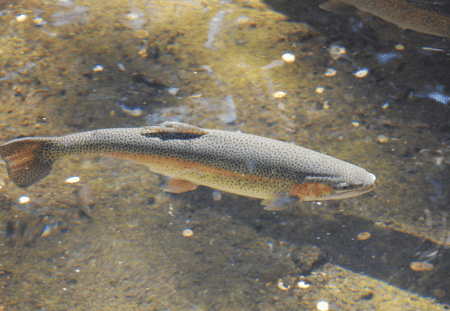
A surprising way that climate change can affect wildlife is by changing the power balance in their interactions. Shifting environmental conditions ultimately favor some species while hurting others. Because of this, climate change can disrupt food webs and other important relationships, even in native species.
When you add invasive species to the mix, however, things get really hairy. Changing climate conditions can make new areas accessible and hospitable to invaders, letting them spread. Furthermore, it often tips the competitive scales in their favor, helping them win out over native species. Ultimately this can be a one-two punch wiping our important native species and driving them to the brink.
For example, many trout and salmon (family salmonidae) rely on cooler, oxygen-rich waters in mountain streams to survive. As a result, these freshwater fish experience an escalator to extinction with climate change advancing on their cold refuges. To make matters worse, these warmer temperatures make it easier for invasive fish to take over.
West-slope cutthroat (Oncorhynchus clarkii lewisi) and bull trout (Salvelinus confluentus) in the American rocky mountains are feeling this squeeze. Changing climate conditions in their native streams are favoring invaders who not only outcompete them but also interbreed with them. This could mean that very few trout representing the original native species will be left in coming decades.
Thanks for reading about climate change effects on wildlife!
Have you seen climate change impacts on the wildlife in your own back yard? Share with us in the comments! If you liked this post, please share it on social media. Questions, or requests for other posts? Don’t hesitate to reach out using the Contact page.

